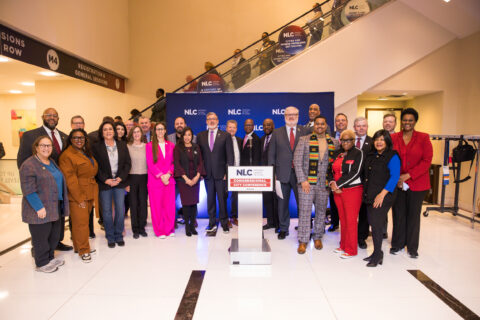Hybrid work—a concept most senior leaders had never considered before 2020—is now becoming standard practice for several state and local government agencies across the nation. A fact supported by a recent Gallup work poll, which found that post 2022, 53 percent of employees expect to have a hybrid work arrangement, and 24 percent expect to be exclusively remote.
To ensure government organizations meet and exceed their hybrid work goals—which include providing a collaborative, accessible and equitable environment—leaders are turning to electronic signature (e-signature) technology platforms like DocuSign to get the job done. As a legally admissible solution, e-signature technology is more secure and cost-effective than cumbersome paper-based processes, and has proven to increase hybrid employee productivity due to its ability to deliver faster and more engaging experiences.
Although e-signature can be leveraged to meet several hybrid work goals, government leaders are seeing success in these three areas:
1. Human Resources
Chief human resources officers (CHROs) know people move organizations forward. This is why 63 percent of respondents on PWCs 2022 pulse survey said increasing flexibility to operate better in a high turnover environment is important for future growth, and 23 percent plan to enrich the new hire onboarding experience.
To meet the above goals in a hybrid work environment and stop back-and-forth emails, government CHROs are integrating e-signature technology into HR processes and workflows, including:
- Hiring and onboarding: Digitizingoffer letters to accept electronic signatures and collecting employee information and tax forms such as W-4s and I-9s.
- Policy documents and training receipts: Batch sending and centralizing the signing and collection of employee policy documents and training completion receipts; and when available, importing the information directly into ERP systems like Workday.
- Performance management and time cards: Digitizing the employee performance and time card process from formation to submission, review and approval.
Human resources success examples:
- New Mexico Educational Retirement Board digitized the application process and accelerated the turnaround time for eight critical processes across the organization, including direct deposit setups, beneficiary designations and address changes.
- City of Memphis eliminated errors in new hire paperwork and streamlined timesheet approvals for contract workers.
2. Case Management
Historically, government casework—from delivering child welfare services to reviewing health benefit applications—involves a high level of manual, lengthy and paper-driven processes. These processes are made even more challenging with a remote or hybrid workforce that often finds it difficult to collaborate.
Thankfully, e-signature solutions are making it easier for government caseworkers to provide the critical services constituents need, no matter where they’re located. A few use cases include:
- Incident investigations: Child or adult abuse investigations, wellness checks and witness interviews can be completed, signed and submitted from the field in real-time, eliminating the need to drive to the office to print and file information.
- Applications and enrollment: Incorporating e-signature into the application and enrollment process allows constituents to sign and submit required documents easily and accelerates the time it takes for remote case workers to review and approve benefits.
- Case planning and review: It’s common for various case managers, doctors, investigators and more to review and sign off on the same case documents. Using e-signature technology in a hybrid environment allows remote employees to seamlessly collaborate, redline and approve the same digital case file without back-and-forth emails or delayed hardcopy deliveries.
Case management success example:
The Indiana Department of Child Services is in the process of digitizing its casework processes to become 100 percent paperless, decrease caseworker turnover and improve service delivery.
3. Procurement, Grant and Contract Management
Government leaders have the tremendous responsibility of ensuring cost-effective services are delivered in accordance with local, state and federal law. Unfortunately, the technology and processes used to accomplish this mission are often outdated and lengthy.
In addition, the government cannot afford to delay grants, contracts and purchases because the staff responsible for reviewing and approving documents are not in the office at the same time.
Implementing e-signature technology as part of an existing procurement, grant and contract process can help remote teams improve turnaround times and use the digital information gathered to seamlessly audit budgets and complete compliance reports.
Procurement and contract management success examples:
- The City of Palm Springs transformed their contracting and procurement efforts with e-signature, eliminating cumbersome and inefficient paper-based processes.
- The City of Olympia implemented a digital process that allows employees to remotely notarize and electronically sign documents.
In reality, a successful hybrid workplace isn’t just about ensuring employees are productive, but also making sure they feel empowered, connected and engaged.
Learn More
If you’re interested in finding out how DocuSign eSignature can meet your agency’s hybrid work goals, get in touch with DocuSign today.
About the Author:
Shonte Eldridge serves as DocuSign‘s first Senior Director of State and Local Government Strategy and Solutions.









